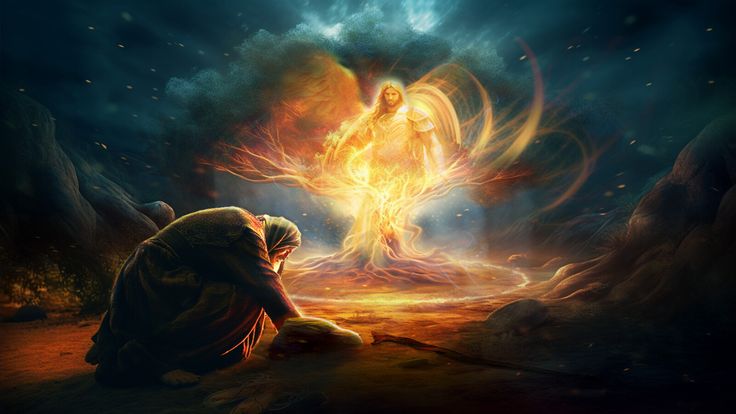In Exodus 3:1-2, it is written that Moses was tending the flock of Jethro, his father-in-law, when he arrived at Horeb, the Mountain of God. Here, the “angel of the Lord” appeared to him as a flame of fire within a bush. Though the bush was engulfed in flames, it was not consumed. This significant detail is key to the exegetical evidence for who actually appeared to Moses in the burning bush! It was the angel, not God the Father, who appeared to Moses. The encounter is crucial, as it underlines the presence of the divine messenger, which early church scholars, such as Justin Martyr, identified as the pre-incarnate Jesus Christ.

In Acts 7:30-35, Stephen confirms that it was the “angel of the Lord” who appeared to Moses in the burning bush. He emphasizes that God the Father sent this angel, further distinguishing the angel from the Father. The angel, who spoke to Moses and led the Israelites, embodied God’s authority and nature.
The angel’s divine nature is reinforced in Exodus 23:20-21, where God instructs the Israelites to obey the angel’s voice, as the angel carries God’s name and has the authority to forgive sins. This angel, who performs acts only God can do, is not a created being but a manifestation of God’s presence.
In Zechariah 3:3-4, the angel commands other angels and declares Joshua’s sins forgiven, highlighting his divine authority. Similarly, in Judges 13, Manoah, the father of Samson, encounters the angel of the Lord, who describes his name as “beyond understanding,” implying a divine nature.

The early church recognized this angel as Jesus Christ, the Word of the Father, who appeared before His incarnation. This identification is supported by passages like Genesis 31:10-13, where the angel of God identifies himself as the God of Bethel, and Genesis 48:15-16, where Jacob blesses his grandchildren by invoking both God and the redeeming angel interchangeably.
In conclusion, the “angel of the Lord” in these biblical narratives is not merely a messenger but a divine figure embodying God’s authority and nature. This angel, understood by early Christians as the pre-incarnate Christ, reveals a complex unity within the Godhead, distinguishing Him from God the Father while affirming His divinity.
